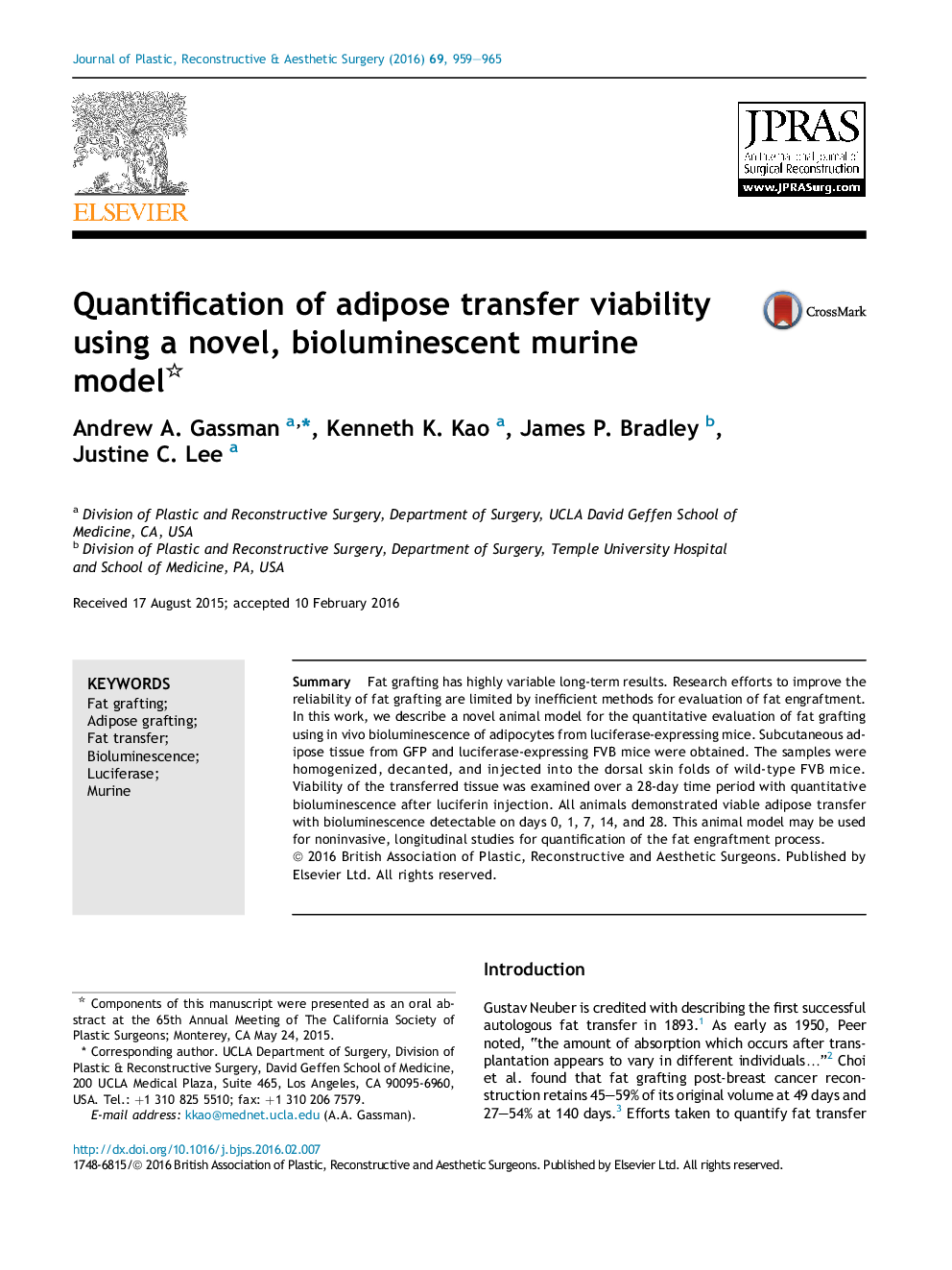| Article ID | Journal | Published Year | Pages | File Type |
|---|---|---|---|---|
| 4117155 | Journal of Plastic, Reconstructive & Aesthetic Surgery | 2016 | 7 Pages |
SummaryFat grafting has highly variable long-term results. Research efforts to improve the reliability of fat grafting are limited by inefficient methods for evaluation of fat engraftment. In this work, we describe a novel animal model for the quantitative evaluation of fat grafting using in vivo bioluminescence of adipocytes from luciferase-expressing mice. Subcutaneous adipose tissue from GFP and luciferase-expressing FVB mice were obtained. The samples were homogenized, decanted, and injected into the dorsal skin folds of wild-type FVB mice. Viability of the transferred tissue was examined over a 28-day time period with quantitative bioluminescence after luciferin injection. All animals demonstrated viable adipose transfer with bioluminescence detectable on days 0, 1, 7, 14, and 28. This animal model may be used for noninvasive, longitudinal studies for quantification of the fat engraftment process.
